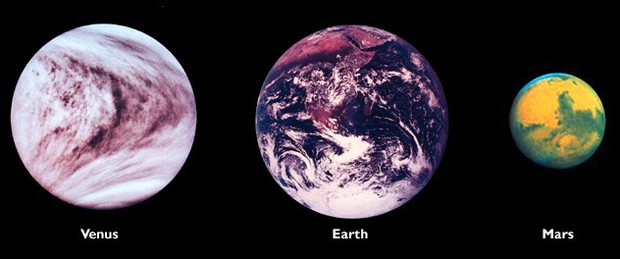Science will have to work harder if it is to ever find a planet that contains real life.
In their quest for extraterrestrial life, scientists often pay attention to the temperatures these planets receive. The habitable planet must be located just far enough from its host star so that the temperature received is neither too hot nor too cold, in order to maintain liquid water on its surface.
However, there is one extremely important thing that science rarely pays attention to is the magnetic field! Unfortunately, according to a recent study, it appears that the number of planets with the same magnetic field as Earth is extremely rare.
In other words, almost all of the “candidate” planets that humans have discovered for so long cannot contain life.
In fact, science has proven that Mars and Venus once had a lot of water. But due to the loss of their magnetic shields, the two were unable to hold the atmosphere and were blown into space by the solar wind.
The problem is, Venus is actually located a sufficient distance away to support life, but it still becomes hell, unlike Earth. So the question is: what about planets outside the solar system (exoplanets)? To answer this question, Sarah McIntyre, an expert currently pursuing her masters at Australian National University, created a model to confirm the proportion of magnetic field property of exoplanets.
And the results are unfortunate. Of the 496 exoplanets studied, only one had a magnetic field as strong as Earth, McIntyre said. Most of the rest are either absent or too weak to make a difference.
Sadly, most of the planets in McIntyre’s model revolve around a dwarf star – the brightest candidate for vital star system science in recent years. These planets need a magnetic field stronger than Earth to be able to hold the atmosphere and water, when in fact they don’t even have a magnetic field.
It is also important to know that the McIntyre model is not absolute, because the number of test samples is not large. However, this suggests that humans need to look for a wider range if they are to find a planet containing real life.



